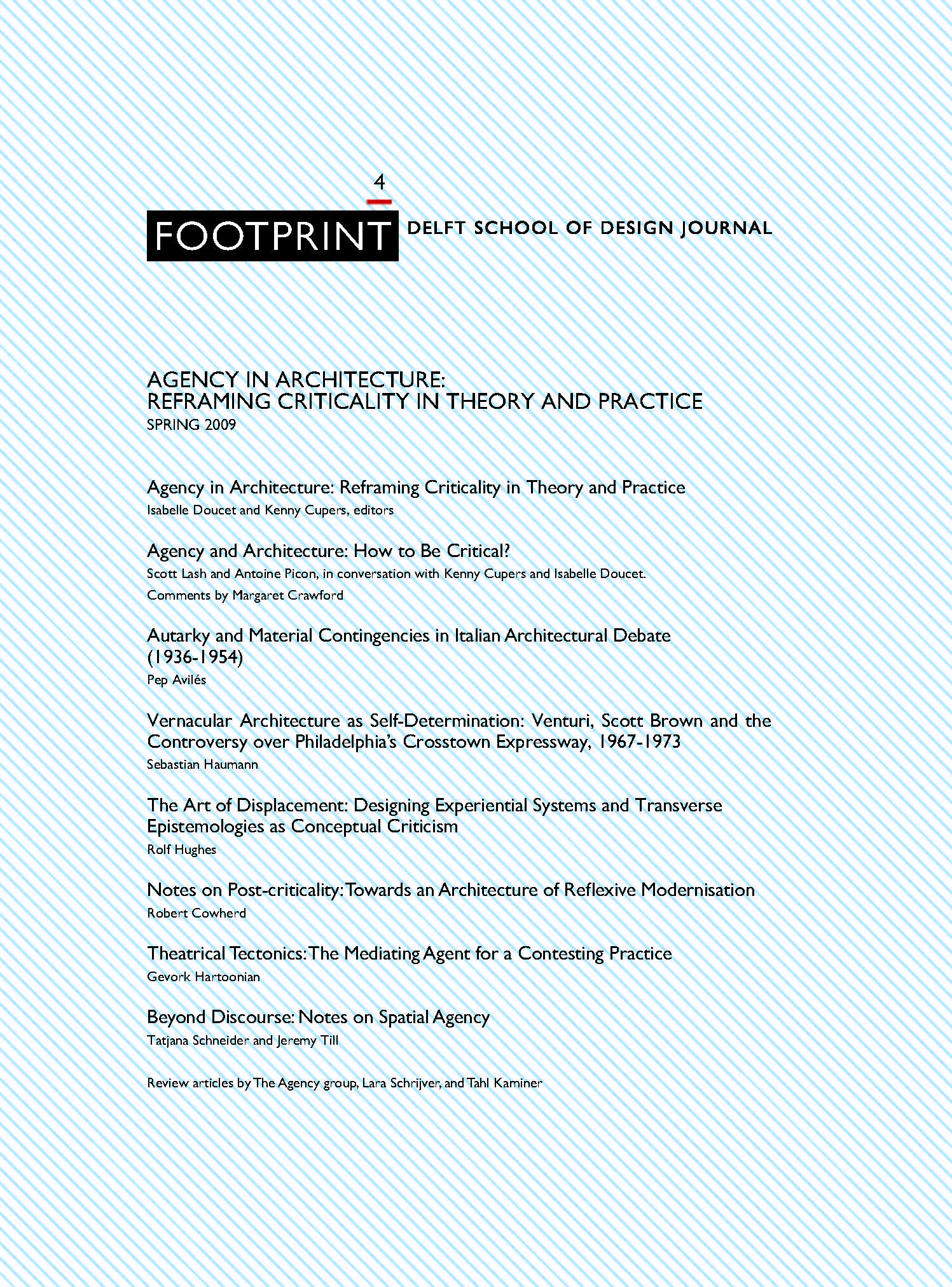Notes on Post-criticality: Towards an Architecture of Reflexive Modernisation
DOI:
https://doi.org/10.7480/footprint.3.1.700Abstract
Since around 2002, the performance of critical theory in architecture and the humanities has itself undergone a critical re-evaluation. Authors representing divergent perspectives, from theory’s perennial naysayers to the standard bearers of critical theory themselves, have converged towards a similar conclusion: judged by outcomes, critical theory has proven ineffective at best, and arguably, corrosive to human progress. In architecture, the debate has revolved around the identification of a ‘critical architecture’ in education and production since the 1970s. In apparent rejection of the isolation and purity of critical architecture’s orthodoxy, Rem Koolhaas and others have chosen engagement with the forces (and commissions) of late capitalism to which the term ‘post-criticality’ has been applied.
Beyond the confining dichotomies of the post-criticality debate is a perspective offered by sociologists Ulrich Beck, Scott Lash and Anthony Giddens on what they have called a ‘second modernity’ or ‘reflexive modernisation’. This literature re-contextualises the modern-postmodern pairing within the larger trajectory of modernity and identifies a characteristic distinction from former modernities in the term ‘reflexivity’. Where high modernism pursued utopian ideals of pure form and functional simplicity, reflexive modernisation acknowledges contingency in human systems establishing feedback loops that trigger course corrections in the process of modernisation itself.
Operating against the ossifications of twentieth-century modernity, reflexivity opens prospects for a second modernisation characterised by a heightened capacity to deal with complexity and time. Speculative architectures of reflexive modernisation benefit from a re-engagement in real-world problems, particularly at the scale of the city. To what extent can considerations of political economy, culture, globalisation, and environmental crisis be translated into the explicit performance criteria and computational parameters? What role is there for tools forged in the fires of ‘critical architecture’ in the emerging architectural creativity increasingly characterised by complexity, provisional outcomes, and unpredictable form?
Downloads
Published
Issue
Section
License
- Authors retain copyright and grant the journal right of first publication with the work simultaneously licensed under a Creative Commons Attribution License that allows others to share the work with an acknowledgement of the work's authorship and initial publication in this journal.
- Authors are able to enter into separate, additional contractual arrangements for the non-exclusive distribution of the journal's published version of the work (e.g., post it to an institutional repository or publish it in a book), with an acknowledgement of its initial publication in this journal.




